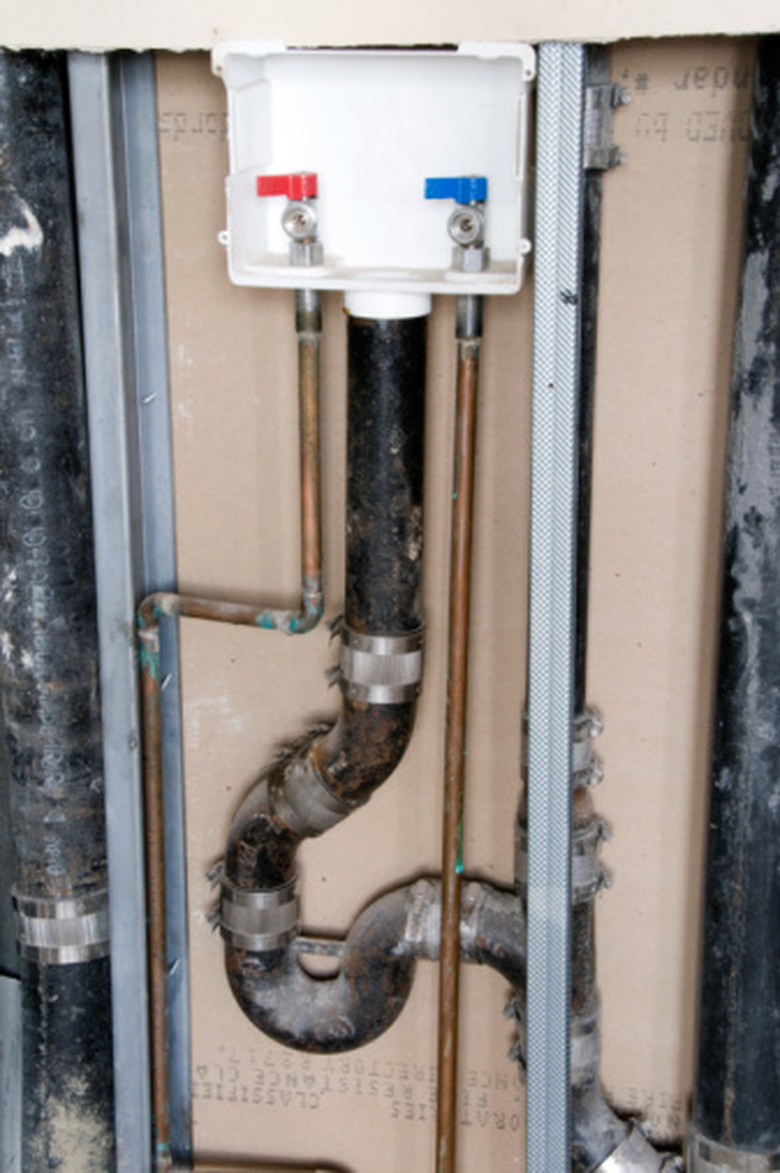How To Prevent PVC Pipes From Freezing
Things Needed
-
Heat tape
-
Thermal insulation
-
Caulk
PVC pipes are in danger of freezing when surrounding temperatures approach 20 degrees Fahrenheit. Ice begins to form and gradually blocks the pipe. This blockage causes a rise in water pressure. Eventually the pipe ruptures and sends water everywhere. Water damage from a burst pipe is expensive. To avoid dealing with burst pipes, prevent them from freezing. Some advanced planning will assist you in keeping your pipes intact during winter months.
Before the Temperature Drops
Step 1
Insulate exposed pipes. Wrap pipes with thermal insulation or heat tape. All products should have the approval of an independent testing company (such as Underwriters Laboratories, Inc.). Four types of thermal insulation are available for residential water pipes, and each one is assigned an R-value. The R-value indicates the heat retention for each material. Spiral-wrap is the cheapest, but has the lowest R-value and the most difficult installation process. R-4 foam tubing is highly recommended. Measure the insulation and trim to your pipe length. Do not block the pipe pressure relief valve. Seal your insulation using duct tape.
Step 2
Seal areas that let in cold air. Caulk around your windows and doors. Caulking mixture comes in a variety of indoor and outdoor formulas. Take care to choose the correct mixture for your task. Clean the area and remove old caulk using a screwdriver or putty knife. Using one continuous motion, apply a generous amount of caulk to the crack you want to seal. Caulk when weather temperatures are above 45 degrees Fahrenheit so the material can settle properly. Check wiring and dryer vents that connect with outside walls for gaps that need to be tightened or plugged.
Step 3
Disconnect hoses and turn off the water supply to outside faucets. This prevents freezing pipes on the outside of your house.
When It Gets Cold
Step 1
Turn on your hot and cold faucets. Let the water continuously drip overnight when the temperature hovers around 20 degrees Fahrenheit. Continuous motion discourages ice formation and alleviates internal pipe pressure.
Step 2
Open cabinets so heat can circulate to pipes under the sink and near exterior walls.
Step 3
Set your thermostat to no less than 55 degrees when you are away from your house for extended periods of time. Installing a programmable thermostat helps your house maintain a constant temperature. Many retailers have self-install programmable thermostats.
Step 4
Shut off your main water valve when you are away from your house for an extended period of time. When the main water valve is turned off, turn all your faucets on and flush the toilet to completely drain all water from your pipes. Make sure you turn your faucets to the off position before you leave.
Warning
Turning off your main water valve deactivates your fire protection sprinkler system.
